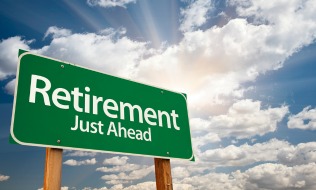
The baby boomers, of which I am one, are famous for having distorted just about every market they have touched. Housing was perhaps the first major market to be impacted by their arrival and we all know what that did to the cost of real estate in hot locations like Vancouver or Toronto. Now with their children leaving the nest and retirement beckoning, the boomers are going to redefine retirement.
I’ve argued elsewhere that I think the boomers are largely going to be responsible for retiring the word retirement. As Mike Drak and I argue in our new book excerpted in the summer issue of MoneySense (Victory Lap Retirement) we believe the next boomer wave is NOT going to be full retirement, but semi-retirement.
Yes, I know a few boomer couples who are fully retired, generally aided by long service in defined benefit plans. Earlier this year, my wife and I attended our 40th college reunion, which meant most of us who attended were 62 or 63 years old. We discovered that with the exception of one couple who were both teachers, and another who were both senior Ottawa mandarins, the rest of us were still working at least part-time.
This would not surprise readers of Tamara Erickson’s 2008 book Retire Retirement, which said that in 1900 workspans were only about 20 years, but are now – like the Class of 7T6 – closer to 40 years. And for today’s millennials, she speculated, the workspan may even end up being 60 years.
Read: How to prepare employees for the psychological impact of retirement
The major reason is longevity: most of us can expect to be living longer due to both medical breakthroughs and greater healthy living and attention paid to both diet and exercise. This summer the influential British weekly newspaper, The Economist, described the greater lifespans we and especially our children can look forward to. Lifespans of 100 and even 110 and beyond will be increasingly common. This is also the subject of a book called The 100-year Life: Living and Working in an Age of Longevity.
The authors (Lynda Gratton and Andrew Scott) write that “a child born in the west today has a more than 50 per cent chance of living to be over 105,” versus a one per cent chance for a child born a century ago. That means a workspan closer to 80 years than 60 years, which means the old School-Work-Retire paradigm won’t work for them, especially with the death of defined benefit pensions and perpetually low interest rates. The millennials and their children will cycle through school/work/leisure repeatedly.
My wife and I happen to be acquainted with a centenarian named Meta, who we met at church. She celebrates her 100th birthday in November. She told us she reads the newspaper obits everyday and is surprised how many of her contemporaries are reaching 95, 100 or beyond.
While the word retirement has outgrown its usefulness, it’s not clear what term will replace it. Our alternative term for semi-retirement or encore careers is the Victory Lap: that stage of life after traditional salaried corporate employment but before the traditional full-stop retirement that used to occur – often rather suddenly – at age 65.
Read: ‘Exciting time for retirement’ as CPP deal signals premium boost to 5.95%
We describe the shock of Sudden Retirement Syndrome or SRS, which afflicts many in this economy, with corporate employers quick to resort to layoffs to bolster shaky bottom lines. It turns out that if you can transition from a traditional job – which is really insecure to the extent you really have only a single client – to a portfolio career of multiple clients and paid and unpaid activities, the odds are you will thrive in semi-retirement. This balanced phase of life could last 20 or more years.
The question arises whether you are ready for this new hybrid stage of life. Here I refer readers to a book by Ian Taylor titled Are you ready for Semi-Retirement?, published in 2008. He says few boomers are financially ready to semi-retire: only 10 to 15 per cent have achieved sufficient financial independence to easily semi-retire before 65. Fortunately, anyone who bought their house early and paid if off they should be sitting pretty: Taylor estimates that “anyone with a home that’s paid off and worth over $500,000 can semi-retire today.”
Read: Employers must do more to help staff transition to retirement
But that addresses only the financial side. Semi-retirement is about much more than just having enough money to sit back and do nothing. Have you ever tried to do nothing for an extended period of time? Fact is, all those empty hours in an unplanned retirement can weigh heavily: you may find yourself bored to death.
In my own semi-retirement, through trial and error the last two-and-half years, I found a happy medium between the stress of taking on too many assignments, and the boredom of not taking on enough. This is where Findependence or Financial Independence comes into play: Findependence is a prerequisite to Victory Lap. Once you have it, you can work as much or as little as you wish: as I wrote in the prequel, Findependence Day, you can now work because you want to, not because you have to, financially speaking.
No matter how much money they have, human beings need challenge, mental stimulation, connectedness with other people, and structure. Losing that is why SRS can be so devastating to those who don’t see it coming. Ideally, you should start planning your Victory Lap or Semi-Retirement while you are still towards the end of your corporate career.
Jonathan Chevreau is co-author (with Mike Drak) of Victory Lap Retirement.
This article was originally published on Benefits Canada‘s companion site, MoneySense.
